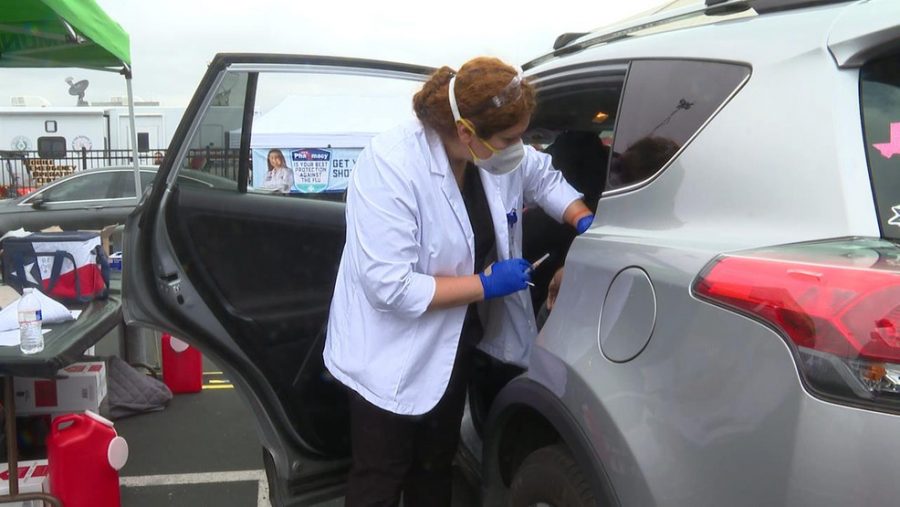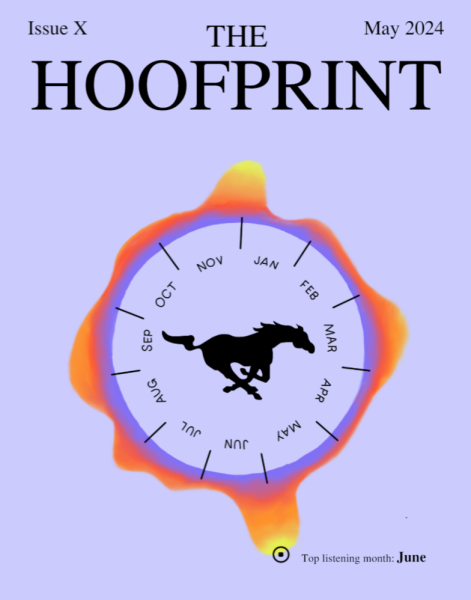Danger Season: Seasonal influenza’s joins forces with COVID-19
Hospitals and pharmacies are doing drive-through influenza vaccinations to better social distance and ensure easy and safe access to the vaccine as flu season approaches.
1,657,706 deaths so far. 12,000 to 61,000 deaths annually. Between COVID-19 and seasonal influenza, risk is high as we approach disease season.
Influenza is highly contagious and very common, and with COVID-19, the question has been asked: what’s going to happen this winter?
Every year, seasonal influenza sweeps across America, killing up to 61,000 people. Flu shots can help, but they don’t cover many strains of influenza. It is possible to receive a flu shot and still get the flu, although your chances are decreased. Annually, flu shots lower influenza cases by 40-60%. Seasonal influenza has no cure, and is often deadly for people with underlying health or medical issues.
One major concern surrounding flu season this year is the similarity of symptoms for people with mild cases of COVID-19 and people with seasonal influenza. These symptoms include headache, respiratory issues, and a sore throat, and are common for both diseases.
If people cannot tell whether they have influenza or COVID-19, they could spread COVID-19 much further thinking that they have a case of seasonal influenza if they actually are infected with COVID-19. However both COVID-19 and influenza are communicable diseases which spread most often when talking without masks, so anyone who fears they have either virus should continue to wear a mask and social distance.
People might also confuse the flu for COVID-19 and panic, filling already stressed hospitals with patients who could recover at home. Fear of the ‘twin-demic’ has led to a second wave of fear as concern spreads over the possibility of co-infection. Dr. William Schaffner, an infectious disease specialist said “Even if we have to deal with a moderate-sized flu epidemic—which all by itself can stress hospital facilities—at the same time as the pandemic, we may be in for a quite rough winter.”
With both influenza and COVID-19 sharing key similarities, how will the annual influenza season and the increase of sick people affect the COVID-19 numbers?
There has been confusion over what kind of disease the COVID-19 virus is. COVID-19 is a recent strain of coronavirus, whose family includes Severe Acute Respiratory Syndrome (SARS) and Middle East Respiratory Syndrome (MERS). COVID-19, similarly to influenza, is a communicable respiratory disease which is currently very prevalent in the United States.
However there is a key difference between the COVID-19 and SARS epidemics which make COVID-19 so dangerous. While SARS was more severe, symptoms appeared much earlier and stronger, allowing people to know they have the disease. Part of the reason COVID-19 is so dangerous is the mildness of some cases, which cause people to not even know they have the disease, and unwittingly spread it. This caused SARS numbers to end at 8,437 cases, where currently confirmed COVID-19 cases stand at 74,724,989 as of December 17th.
A larger concern surrounding the two diseases is the possibility of coinfection. Doctors and hospitals don’t know yet what a spread of the two diseases combined would look like, and how the symptoms and recovery would change. Influenza compromises the immune system and often increases the potency of many diseases. This could lead to much stronger COVID-19 symptoms and a compromised immune system, which increases risk of hospitalization and death.
The first co-infection case between COVID-19 and influenza was confirmed in Solano County, California. Dr. Bela Matyas, Solano County health officer, has made a statement on the case. “We now have flu in our community at the same time we have COVID-19,” said Matyas. “Contracting either disease may weaken your immune system and make you more susceptible to the other disease.”
A combination of the two viral diseases would be very likely to increase the fatality rate of COVID-19, as well as increase the likelihood of permanence for stronger symptoms such as loss of taste, loss of smell and permanent respiratory damage.
Martin Chaney, of the Maury Regional Medical Center in Tennessee where co-infection cases have been confirmed, said “When you get influenza, which is a respiratory illness and you get COVID-19, which also impacts the respiratory tract, it only makes sense that those individuals are going to have a serious respiratory component with shortness of breath, potential for respiratory failure is very high in co-infection.”
In order to prevent overcrowding hospitals and lower the death and case numbers, hospitals and the CDC are urging people to get the annual flu shot. This could be vital in reducing the likelihood of coinfection for many people. The annual flu shot also reduces your chances of being severely affected by COVID-19, as influenza can increase the strength of other infections and diseases. In addition to the flu shot, officials are continuing to urge people to stay inside and respect social distancing and mask guidelines. If you suspect you are suffering from either influenza or COVID-19, you should stay home and avoid contact with other people for two weeks.

Elisabeth Delpouys is a junior at Monte Vista high school, as in her second year of Journalism. Elisabeth...











